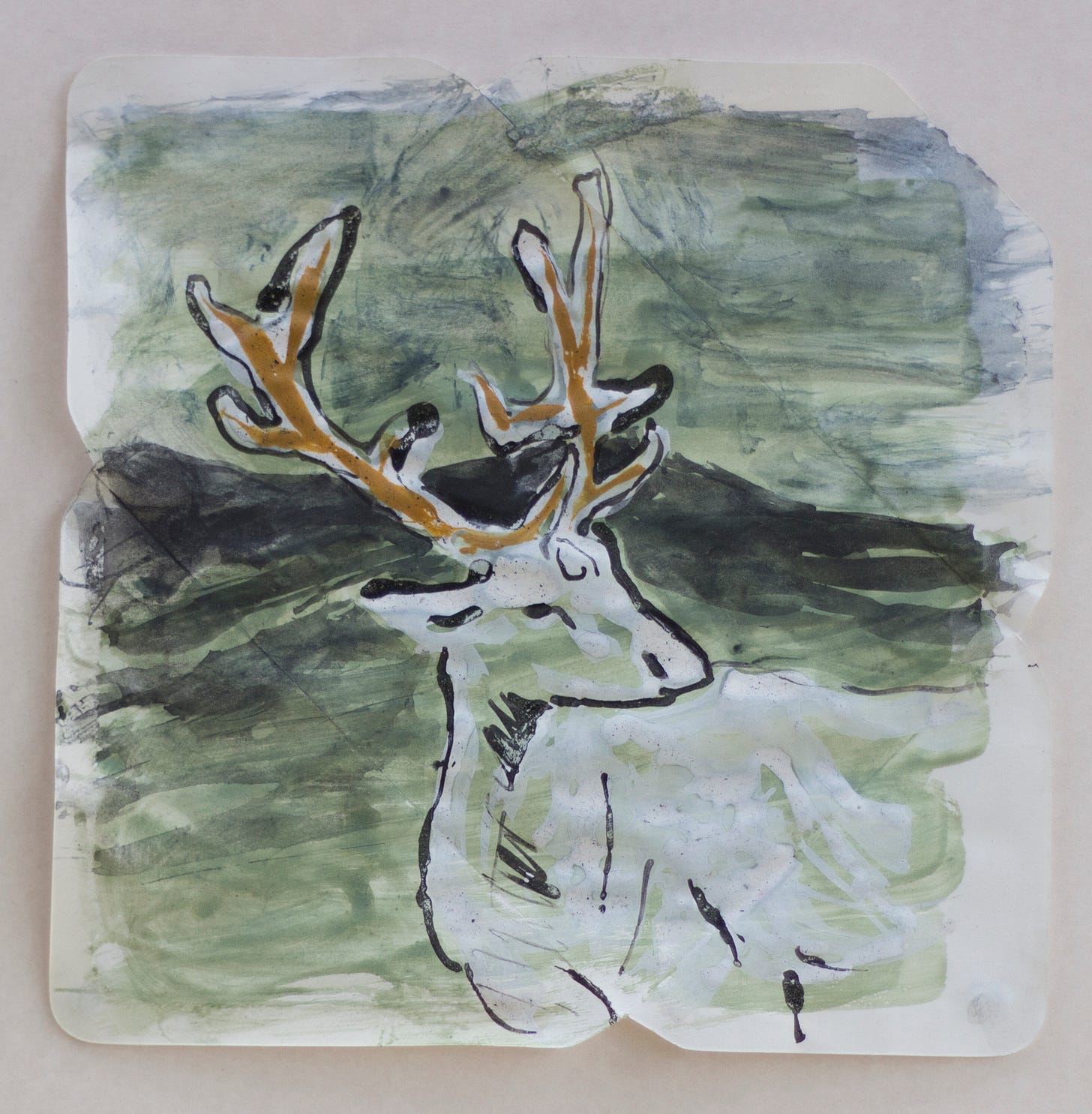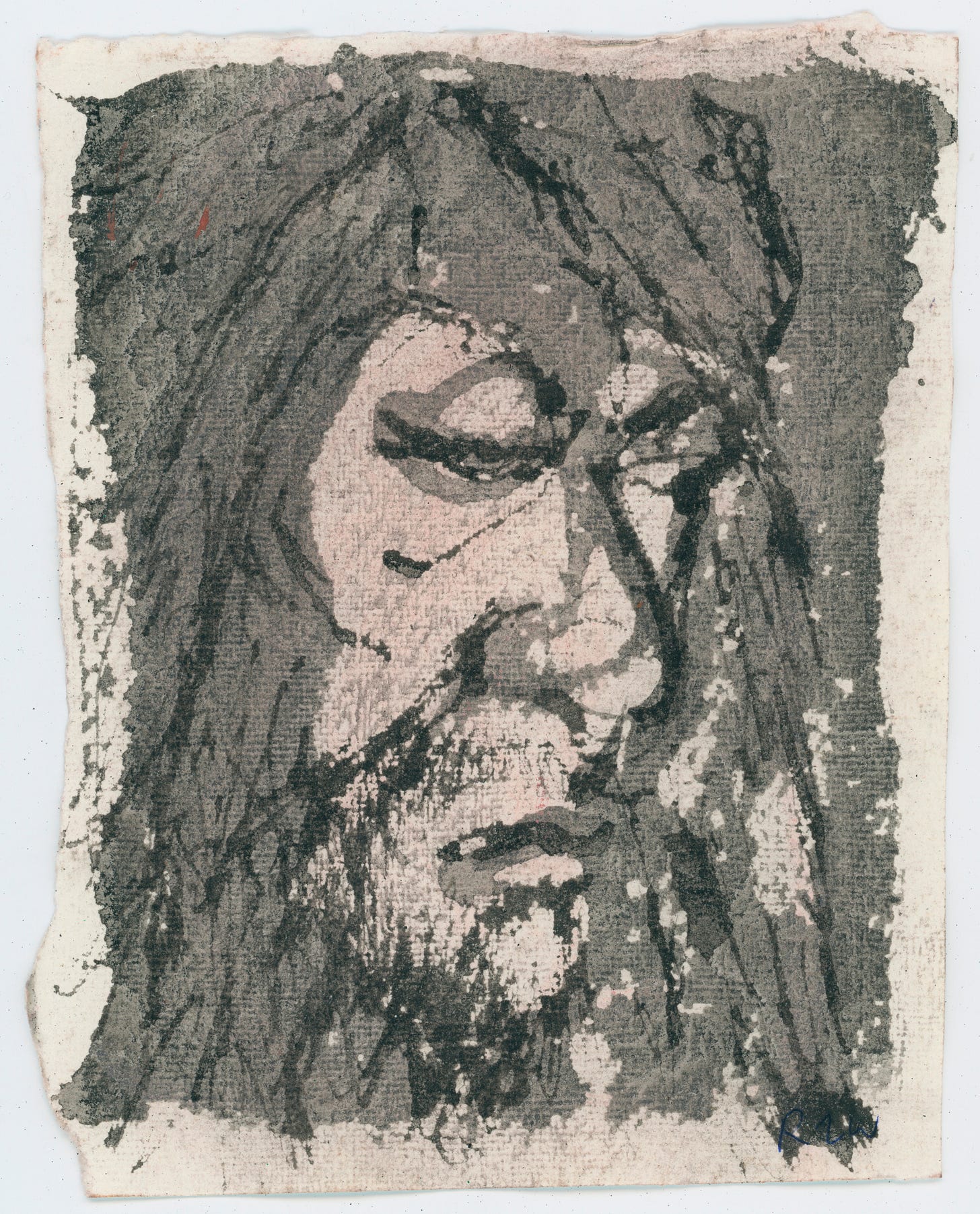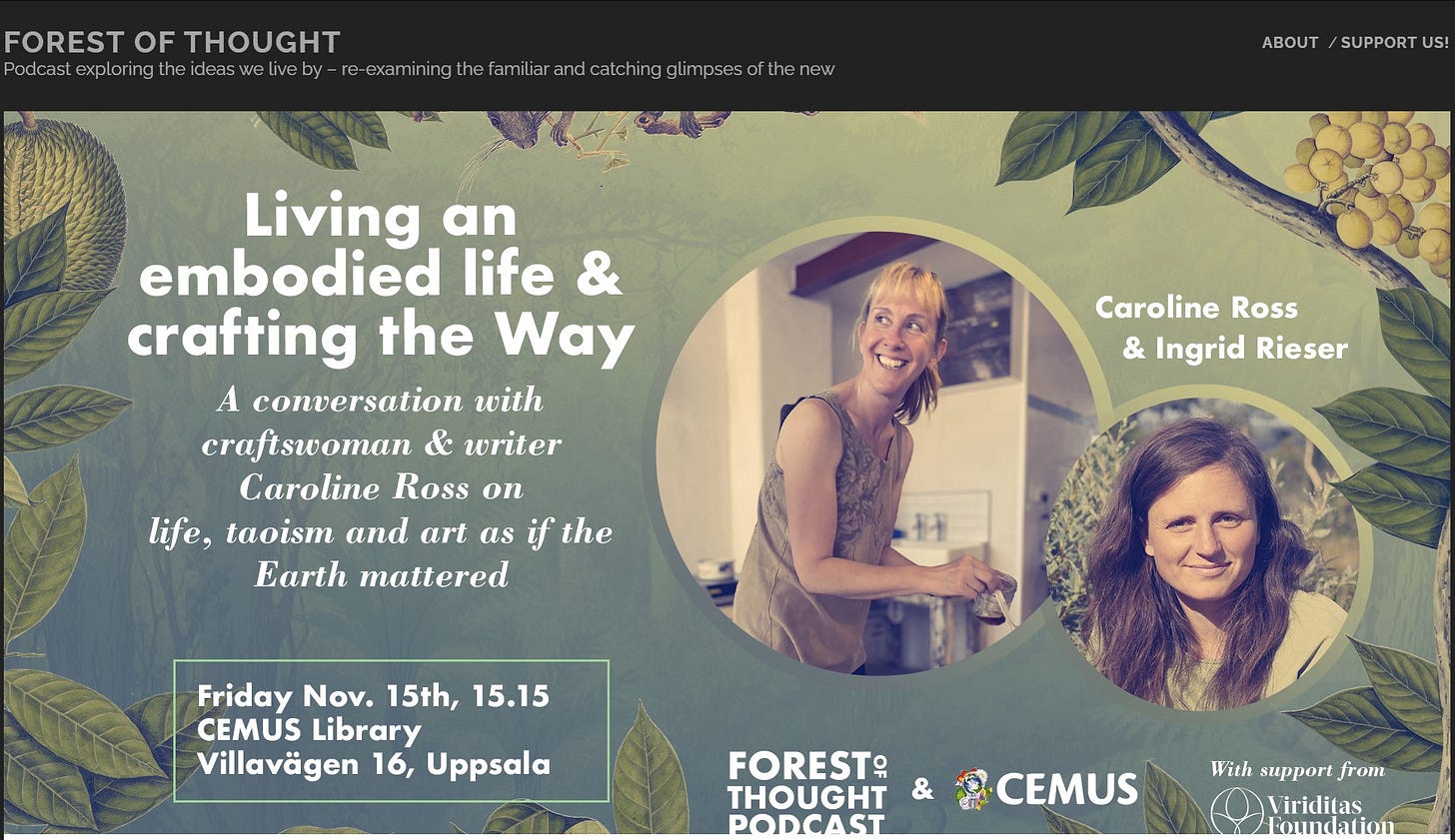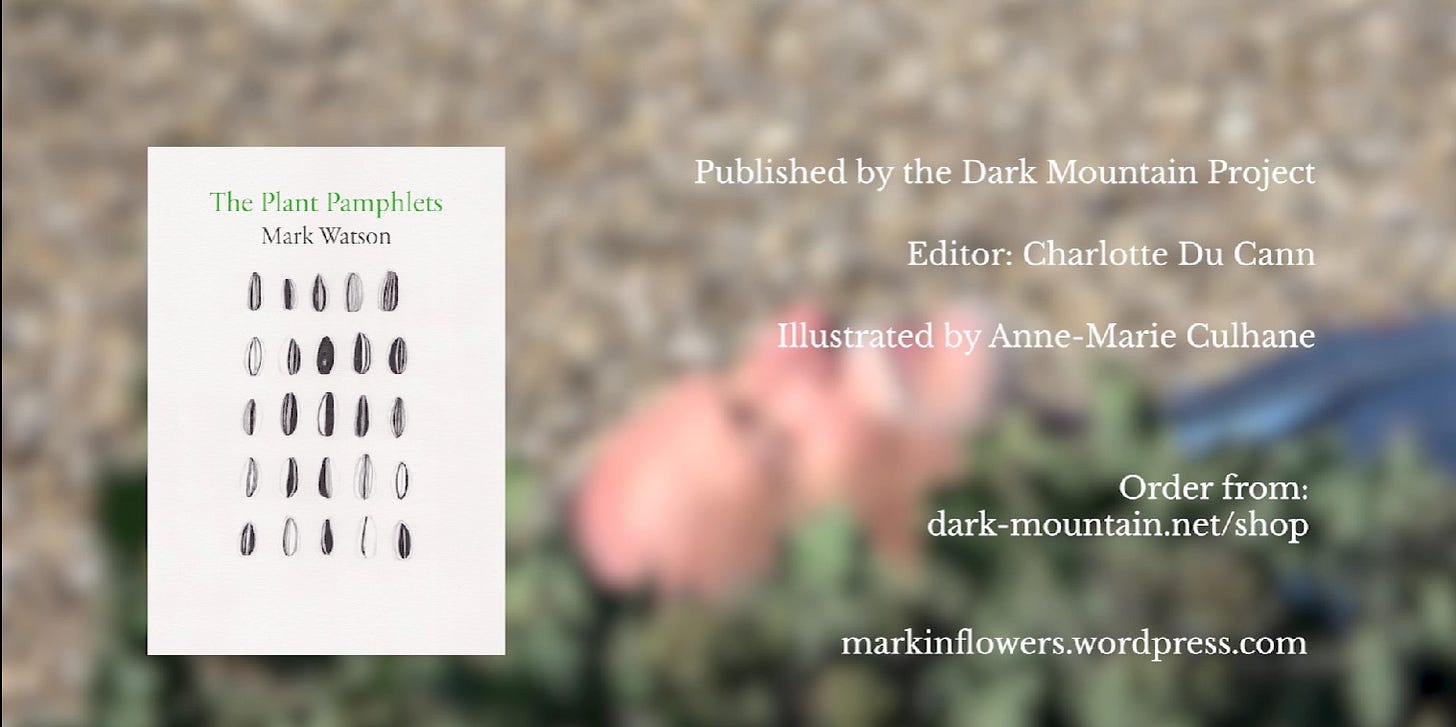
As a hobby tanner of over a decade, I tan deer hides pretty frequently. Their poor necks and bellies are sometimes scarred so badly by scores of tick bites that even with the most careful handling, small holes can turn into rips. Sometimes I imagine the discomfort and outright pain that these deer suffer from the bloodsucking ticks as they go about their lives, being drained by about 30 parasitic arachnids at any time, sometimes receiving blood borne diseases in addition.
I try not to be species-ist but I have a very hard time finding anything to love about the entire Ixodida family and recently spent some unpleasant minutes removing embedded, fat, wriggling ticks from myself and my partner in New England. In America, at least possums eat them, and in Africa, there’s tickbirds… A handful of British, French and American friends have had their lives ruined, almost died, or continue to suffer ongoing chronic illness, due to tick-borne diseases. Another friend, who is thankfully now well, had one side of his face slump with a palsy caused by the parasite given him by a tick bite in Epping Forest…
Why bring up these unwelcome little critters? Last year I wrote about Remedies for Lyme Disease of the Soul. Well, now I also feel that AI is like a tick upon the body of the Earth.
Excellent articles exist from writers here on Substack such as these from School of the Unconformed, Blood in the Machine, and The Honest Broker amongst others. They write regularly about many facets of AI discussing it’s influence, reach and effects. Others feel that it poses a spiritual threat, or is the embodiment1 of some kind of demonic force. There are so many opinions on and ramifications of AI that even a keenly interested observer cannot keep up.
Energy drain
Each week, new reports come in that the world’s AI use of electricity is comparable to that of a country. At first it was ‘a small country’, then it was ‘a country the size of Japan’. Scientific American recently said it is ‘a shocking amount’ and that’s before they account for the cooling of the machines, possibly 50% more on top of the processing, although no-one will share their data. The International Energy Agency’s own 2024 report is dismal reading once you see past the ‘neutral’ tone and ‘developing’, ‘advanced’, low-carbon’ (ie. nuclear) and other euphemistic terms.
Chris Baraniuk, on the BBC news website 21st May 2024, wrote,
A Generative AI system might use around 33 times more energy than machines running task-specific software, according to a recent study, external by Dr Luccioni and colleagues. The work has been peer-reviewed but is yet to be published in a journal. [my emphasis]
It’s not your personal computer that uses all this energy, though. Or your smartphone. The computations we increasingly rely on happen in giant data centres that are, for most people, out of sight and out of mind.
“The cloud,” says Dr Luccioni. “You don’t think about these huge boxes of metal that heat up and use so much energy.”
I will confine myself to responding only to the energy requirements of AI at this time and reserve any feelings I have about the ‘goodness’ (or otherwise) of it for another time. ‘Thirty-three times the power requirements of task-specific software’ is not some little statistic that we can sweep under the carpet. Perhaps you are a climate-sceptic, and don’t believe that CO2 emissions contribute to climate chaos. But still, you’d rather not have the air pollution or grid-outages that such an energy-sucking industry could cause.
Ordinary people, artists, creators, farmers, workers, parents, lovers… we did not ask for AI but it was made to seem inevitable, first by Science Fiction and Horror books and films, where at least it was almost always solidly critiqued. Later it was made real by the tech overlords of Silicon Valley whose inhumane imaginations2 have set loose artificial species of energy sucking-ticks, of livelihood removal-ticks, of truth replacement-ticks.
I’ve had it with the enshittification of the internet. It is almost impossible to look things up easily and effectively any more. Those of you who know me in what we 1970s kids still quaintly call ‘real life’, will know that I am not usually a complainer: if I want something done or changed, I generally just go and do it myself. Can’t get a record label? Start one. Want more people to get excited about using natural art materials and not plastic ones? Write a book, or two, about it and then go round in person and teach it. But I can’t make myself a new internet. Even my brother, author of the UK’s most widely used school technology textbooks can’t do that, and he can make most things. That’s possibly beyond almost anyone’s power, now. I’d be happy with the old one back, from about 2006, perhaps.
The Earth has finite resources. How hard is that for Silicon Valley to grasp? How many toxic arid wastelands must be made of lithium-bearing regions and copper mining districts to make the endless grey box ‘data-farms’, which surely are our own dark satanic mills? The body of the Earth, its enfolding atmosphere, the deep churning mantle; they are not lifeless. We humans and creatures are the Earth, too, and we are most certainly alive. AI is as though a tick on this living being, draining its energy. Whether you love Earth because you believe it was created by God, or you love Earth because it is unboundedly excellent and beautiful, or both, then let us think of ways to pluck out this tick and somehow feed it to the cosmic possums.
My Luddite response
Back in 1984 when we studied the Industrial Revolution in history at school, we heard passing mention of the Luddites as the teacher wistfully said they were doomed to fail against the ‘march of progress’. This was still the era of Thatcher the milk snatcher and the Cold War. We all assumed better days were coming.3 Turns out the Luddites have had an unfair press, and when I have read Blood In The Machine I’ll say more. I am not against tools, and as I wrote in The Cook and His Cleaver, and in The Now Time of the Hand, the right tools used well can deepen human flourishing and bring great fulfilment.
No artificial attempt at balance from me this week, only art. I am busy drawing logos for all of us to freely use wherever we make our art, music or writing. I have started with sketches using the pen that was in the mug in the kitchen and scrap paper, but I’ll move on to oak gall ink and quill pens once I get the designs sorted. Then I’ll photograph them and turn them into jpegs using the photo editor on this laptop4. I was hoping to have them ready to give you this week, but I needed to make quince jelly and rosehip oxymel from the neighbourhood today before I head to Sweden for a week to see see friends and celebrate
‘s birthday. So expect them within a week or two. Preserves made of foraged goods must always come first, they are a gift that we can turn into gifts.Most of the ‘No AI’ stamps I have seen feature an robot hand or a circuit board or some such ‘artificial’ device with a diagonal cross through it. Firstly, I just have no desire to draw a robot hand. Secondly, I don’t want a sign for fully human artforms to default to using its opposite, even in the negative. So, expect fountain pen nibs, brushes, pencils and musical staves, etc, to appear in my logos. I am for convivial tools, so those are what I’ll draw. In the meantime, if you are in the mood and have more spare time than I do this week, why not draw your own No AI stickers, logos and signs? Get your kids drawing, have a drawing party. If you do create something, please send me a link so that I can share them.
When mine are done I’ll add them to a post and as a downloadable resource on my Archive page, once I’ve worked out how, of course…5
You don’t have to buckle under and use AI to make things. You can, at least for now, seek out art, writing and products that don’t uselessly suck up all this electricity, even if you don’t have personal qualms regarding content, as I and many others do. You can do things by hand. I thought it would be hard to avoid advertising, living in a modern town in England, but it’s been pretty easy, no telly helps. AI is harder to avoid, as now that firms have realised most people don’t like its results, they don’t necessarily let us know their applications use it, unlike two years ago when they were trumpeting it.
Thanks to all those critically writing about and researching the massive human mistake that is how we are using Artificial Intelligence, LLMs and related technologies. I do keep abreast of the so-called success stories. My brother reminded me last week how good it is at recognising cancerous tumours and diagnosing illness from good statistical data and imaging. He argues that AI can be a force for good in the world.
What do you think? You are welcome to leave a comment, and if you can’t afford a paid subscription, just answer this email and I will comp you six months for free so that you can comment. (I restrict comments as I had some pretty foul trolls last year. You can read my reasoning here.)
This week has been a ‘between essays week’, indeed, it has been ‘a rant week’. It’s almost two years since I started writing here, more about that next week. Until then. Enjoy a tick-free week.
Antidotes to the Time of The Tick…
Free event in Uppsala, Sweden on 15th November
Join me for a live talk with Ingrid Reiser of Forest of Thought podcast. We’ll be talking about the embodied life and crafting a Way as the final event in an intriguing series called ‘Life Force’. All are welcome, fika (coffee and cakes) will be provided.
This Week’s Good Thing: The Plant Pamphlets by Mark Watson. For the launch of The Plant Pamphlets, here’s a beautiful short film put together by my partner, the filmmaker Jonny Randall, of clips filmed by Simon Maggs of our dear departed friend. Mark wrote and taught inspiringly about plants and his partner Charlotte Du Cann has produced a richly illustrated, slim volume packed full of his insights and practice, based around 12 plants and a tree. You can order it here.
This little book is a perfect gift for those you love. An invitation to reconnect to the real, and medicine against the febrile atmosphere of ‘current affairs.’ There is a much deeper current than this, and plants have their roots in it. So did Mark. May you, too.
Heartwork movement class
Join me online on Saturday 30th November 4pm UTC / GMT for the next in our Heartwork movement sessions. All the details and invitation are at the bottom of this post from last week, you’ll need a paid subscription to join us, even if just for this month. If you’d like to come, but can’t afford a subscription, reply to this email newsletter and I will comp you six months for free.
Or perhaps dis-embodiment…
Written about brilliantly by Mark O’Connell in To Be A Machine.
Well, either that or the Atom Bomb. Watch (and cringe) Protect and Survive.
Not using AI, obviously…
Advice gladly taken about how and where to host downloadable jpegs for use by readers. Get in touch.










Will you post a link to your conversation with Ingrid Reiser once it is recorded? Thanks for considering!
Convivial tools! Oh my yes. What a heart warming and tool-loving phrase